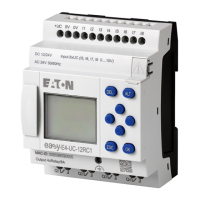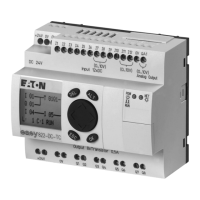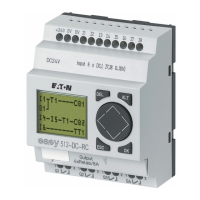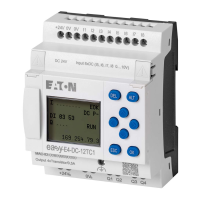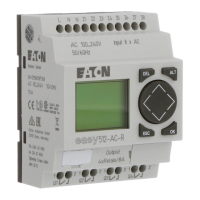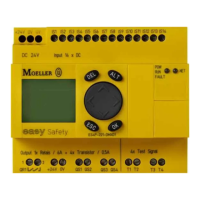6. Function blocks
6.1 Manufacturer function blocks
6.1.2.4 CI - Incremental counter
CI function blocks can be used to quickly count rising and falling edges forward and
backward. This counting is independent of the cycle time.
You can set a lower and higher limit as comparison values for the incremental value
counter, as well as a start value.
There are two incremental counters available.
Square wave count pulses are required to ensure a 1:1 mark to space
ratio.
The signals at channels A and B must have an offset of 90°; otherwise
the count direction will not be detected.
The maximum count frequency is 5000 Hz.
Note that the digital inputs I1 to I4 are permanently assigned to the incre-
mental counter function blocks provided:
l
I1: Counter input for counter CI01, channel A.
l
I2: Counter input for counter CI01, channel B.
l
I3: Counter input for counter CI02, channel A.
l
I4: Counter input for counter CI02, channel B.
General information
easyE4 base devices provide 2 high-speed incremental encoder
counters, CI01 through CI02. The high-speed up and down coun-
ters are internally hardwired with the digital inputs I01...I02 or
I03...I04 and operate independently of the cycle time.
Operating principle
Incremental counters interpret rising and falling edges in order to identify the count
direction. The count will be in the direction of the rising and falling edges.
The counter wiring must observe the following digital device input assignment:
I01 Counter input for the counter CI01 channel A.
I02 Counter input for counter CI01 channel B
I03 Counter input for counter CI02 channel A
I04 Counter input for counter CI02 channel B
The contacts will switch according to the actual value. The appropriate function
block outputs switch according to the actual value determined. The counter relays
enable a preset start value to be defined at the SV input.
Only square wave signals are permissible.
322
easyE402/24 MN050009ENEaton.com
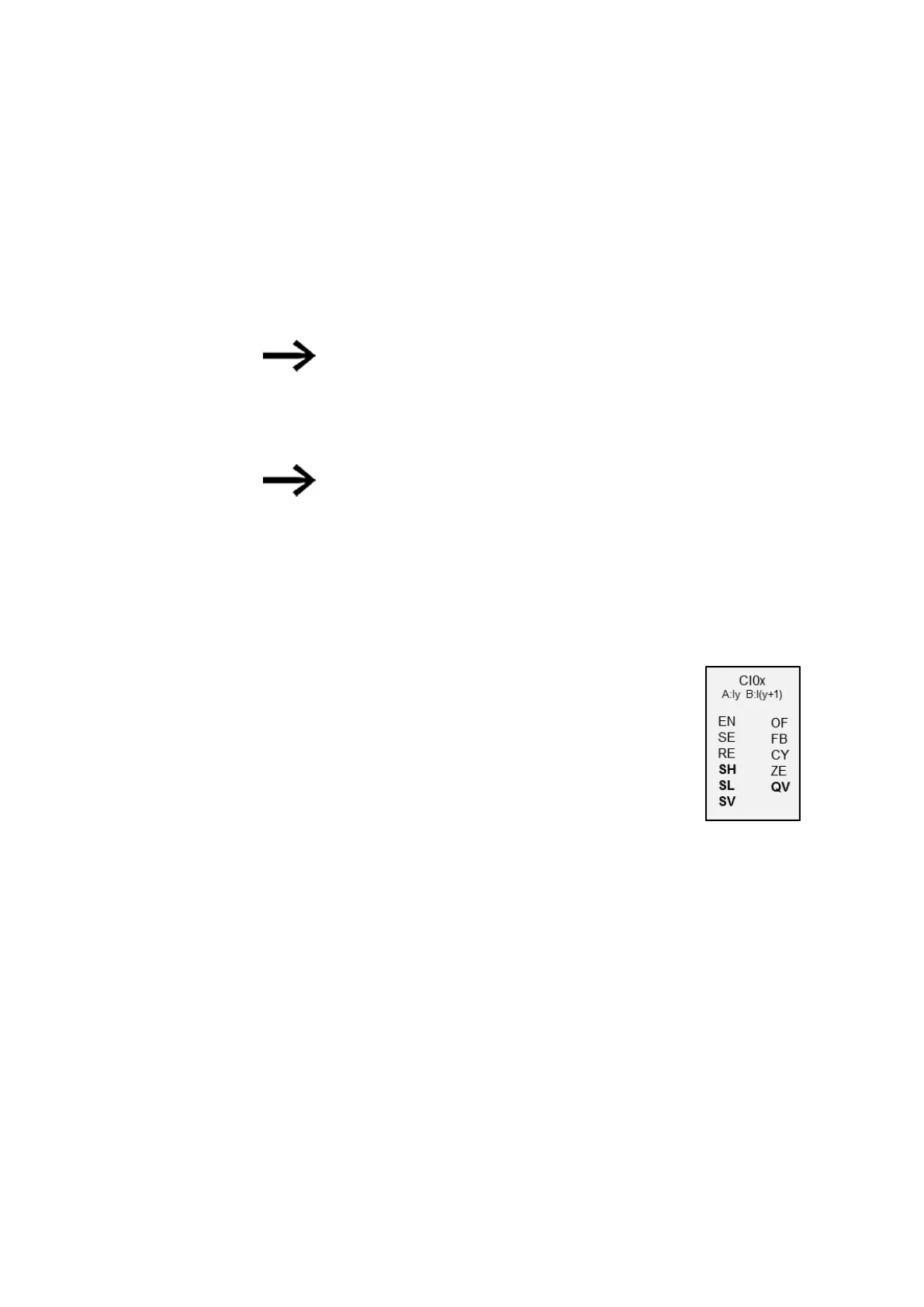